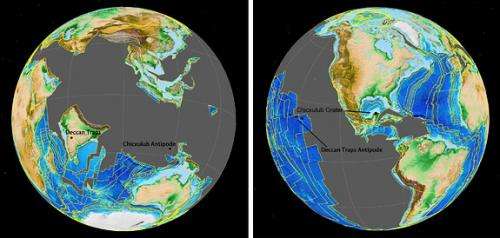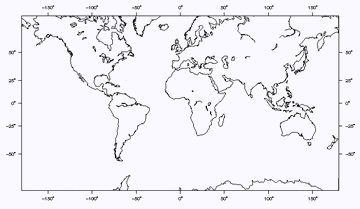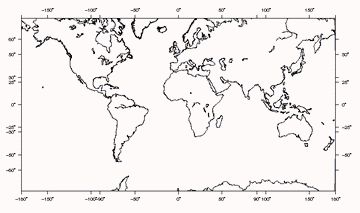Impact study: Princeton model shows fallout of a giant meteorite strike

(PhysOrg.com) -- Seeking to better understand the level of death and destruction that would result from a large meteorite striking the Earth, Princeton University researchers have developed a new model that can not only more accurately simulate the seismic fallout of such an impact, but also help reveal new information about the surface and interior of planets based on past collisions.
Princeton researchers created the first model to take into account Earth's elliptical shape, surface features and ocean depths in simulations of how seismic waves generated by a meteorite collision would spread across and within the planet. Current projections rely on models of a featureless spherical world with nothing to disrupt the meteorite's impact, the researchers report in the October issue of Geophysical Journal International.
The researchers -- based in the laboratory of Jeroen Tromp, the Blair Professor of Geology in Princeton's Department of Geosciences -- simulated the meteorite strike that caused the Chicxulub crater in Mexico, an impact 2 million times more powerful than a hydrogen bomb that many scientists believe triggered the mass extinction of the dinosaurs 65 million years ago. The team's rendering of the planet showed that the impact's seismic waves would be scattered and unfocused, resulting in less severe ground displacement, tsunamis, and seismic and volcanic activity than previously theorized.
The Princeton simulations also could help researchers gain insight into the unseen surface and interior details of other planets and moons, the authors reported. The simulations can pinpoint the strength of the meteorite's antipodal focus -- the area of the globe opposite of the crater where the energy from the initial collision comes together like a second, smaller impact. The researchers found this point is determined by how the features and composition of the smitten orb direct and absorb the seismic waves. Scientists could identify the planet or moon's characteristics by comparing a crater to the remnants of the antipodal point and calculating how the impact waves spread.

Lead author Matthias Meschede of the University of Munich developed the model at Princeton through the University's Visiting Student Research Collaborators program with co-authors Conor Myhrvold, who earned his bachelor's degree from Princeton in 2011, and Tromp, who also is director of Princeton's Institute for Computational Science and Engineering and a professor of applied and computational mathematics. Meschede describes the findings as follows:
"We have developed the first model to account for how Earth's surface features and shape would influence the spread of seismic activity following a meteorite impact. For the Earth, these calculations are usually made using a smooth, perfect sphere model, but we found that the surface features of a planet or a moon have a huge effect on the aftershock a large meteorite will have, so it's extremely important to take those into account.
"After a meteorite impact, seismic waves travel outward across the Earth's surface like after a stone is thrown in water. These waves travel all the way around the globe and meet in a single point on the opposite side from the impact known as the antipode. Our model shows that because the Earth is elliptical and its surface is heterogeneous those waves travel with different speeds in different areas, changing where the waves end up on the other side of the world and the waves' amplitude when they get there. These waves also are influenced by the interior. The effect on the opposite side is a result of the complete structure.

"We began by asking whether the meteorite that hit the Earth near Chicxulub could be connected to other late-Cretaceous mass-extinction theories. For example, there's a prominent theory that the meteorite triggered huge volcanic eruptions that changed the climate. These eruptions are thought to have originated in the Deccan Traps in India, approximately on the opposite side of the Earth from the Chicxulub crater at the time. Because North America was closer to Europe and India was closer to Madagascar during the Cretaceous period, however, it seemed questionable that the Deccan Traps were at the Chicxulub impact's antipode.
"Regarding the mass extinction, we saw from our measurements that a Chicxulub-sized impact alone would be too small to cause such a large volcanic eruption as what occurred at the Deccan Traps. Our model shows that the antipodal focusing of the seismic wave from such an impact was hugely overestimated in previous calculations, which used a spherical-Earth model.
"The Earth's maximum ground displacement at this point has been calculated to be 15 meters, which is extreme. The first outcome of our model was that this is reduced by a large amount to about three to five meters. On the spherical model, all the waves come together at exactly one point and, as a result, have a huge amplitude. We found the waves are disturbed by surface features and take on a more ragged structure, meaning less energy is concentrated at the antipode.
"But our results go beyond Chicxulub. We can, in principle, now estimate how large a meteorite would have to have been to cause catastrophic events. For instance, we found that if you increase the radius of the Chicxulub meteorite by a factor of five while leaving its velocity and density the same, it would have been large enough to at least fracture rocks on the opposite side of the planet. Our model can be used to estimate the magnitude and effect of other major impacts in Earth's past. A similar model could be used to study other examples of antipodal structures in the solar system, such as the strange region opposite the gigantic Caloris Basin crater on Mercury.
"Also, such a model can help examine the interior of a moon or planet by comparing the size of the crater to the amount of antipodal disruption -- you only need two pictures, basically. One could correlate a certain impact magnitude with the observed antipodal effect -- which is dependent on the object's surface features -- and better understand the heterogeneity of the surface by how the energy was distributed between those two points. That can reveal information about not only the surface structure of the body at the time of the impact, but also the interior, such as if the planet has a hard core."
More information: onlinelibrary.wiley.com/doi/10 … 011.05170.x/abstract
Provided by Princeton University



















